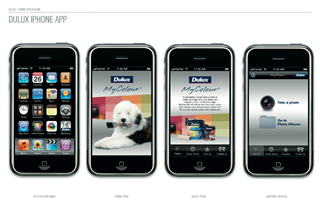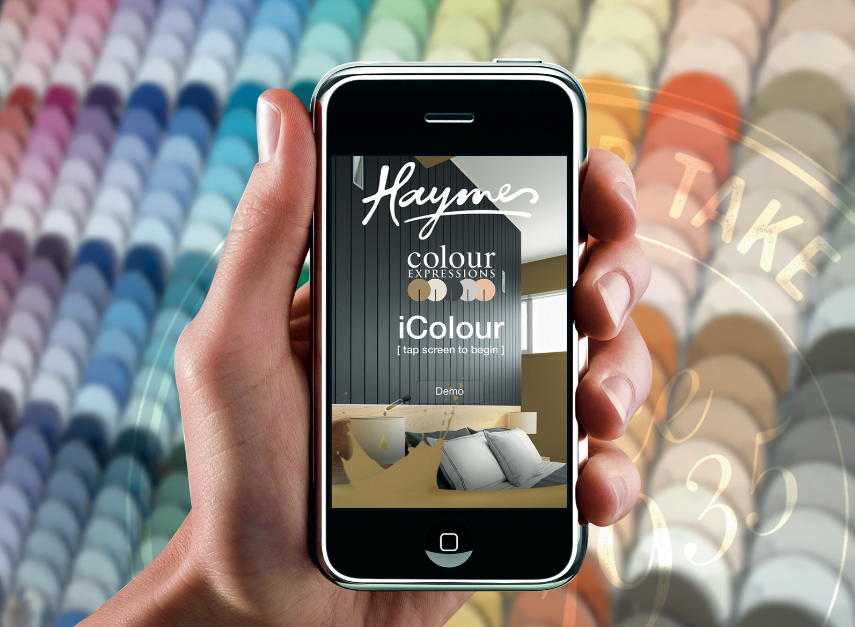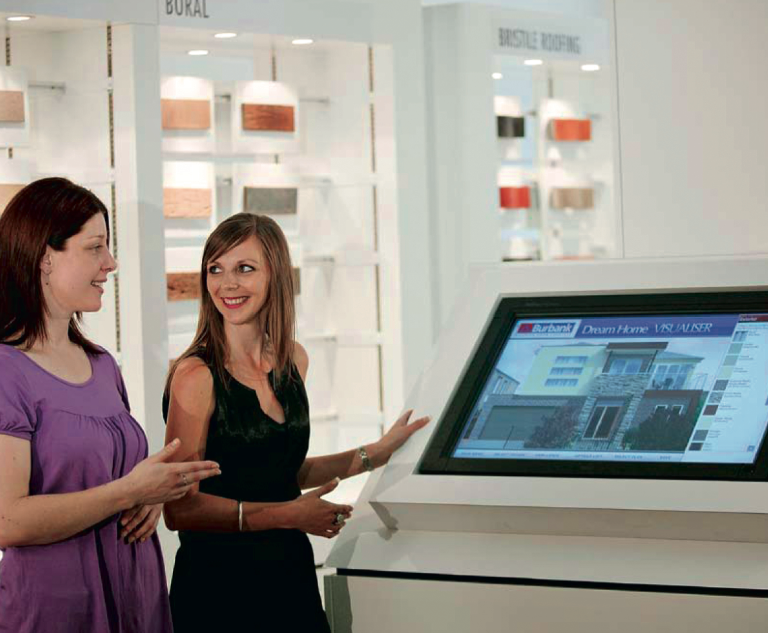A digital transition is underway in the world of paint specification. David Wheeldon reports on the changing composition of decorative paint marketing and retailing.
Online visualisation software and electronic colour tools were once seen as little more than a gimmick.
Now it’s hard to pinpoint exactly when it happened, but that has all changed; these digital mediums are now indispensible tools used by paint manufacturers to deliver information about their products.
The most recent game-changers, mobile applications, will not only provide greater choice and power to the customer; they’re tipped to prompt major changes in the way showrooms look and function.
For the architectural specifier, these developments are expected to prove incredibly useful. Beyond factors like product accessibility and choice, there’s the enhanced potential to demonstrate to a client how a finished design will really look.
Australia leading the world
 The world’s first completely online colour visualiser was released in 2008, for Europe’s biggest paint manufacturer, Jotun. The big leap was that it came with no need to download or install any additional software. Users could create an account and then upload their own digital photos to paint their homes in any of the manufacturer’s available colours.
The world’s first completely online colour visualiser was released in 2008, for Europe’s biggest paint manufacturer, Jotun. The big leap was that it came with no need to download or install any additional software. Users could create an account and then upload their own digital photos to paint their homes in any of the manufacturer’s available colours.
The visualiser was then complemented by a mobile application, ColourMatch, which lets users specify colours from within their photos by tapping the screen. Again, it matches the desired colour to one of manufacturer’s.
In another advance, it could also recommend colour combinations that coordinate with the selected colour, using colour theory and the colour wheel. Users can then proceed by using a built-in store locator.The Jotun software was developed by Tasmanian company Autech, which the Australian Government named Australian Regional Exporter of the Year in 2009.
In addition to the aforementioned products, the company has developed iPhone, iPad and Android visualisation applications including:
-
eFandecks - electronic versions of actual paint company fandecks.
-
eColour Cards – electronic versions of paint company colour cards.
-
Colour and Image Visualisation - viewing colours on images.
-
Product Visualisation – viewing products such as bricks, carpets, and so forth on images.
At home
 Autech has worked with Australian company Haymes Paint since 1999, developing a number of e-colour innovations, including several editions of a digital home visualiser. The company’s CEO Darren Alexander says, “Autech have also developed the Haymes Online Colour Centre which runs from the Haymes website and is by far and away the most popular section of their site.”
Autech has worked with Australian company Haymes Paint since 1999, developing a number of e-colour innovations, including several editions of a digital home visualiser. The company’s CEO Darren Alexander says, “Autech have also developed the Haymes Online Colour Centre which runs from the Haymes website and is by far and away the most popular section of their site.”
The Online Colour Centre features tools such as an interactive colour wall, eFandecks and eColour Cards, an Online Colour Scheming Centre and an Inspirations Gallery.
Most recently, Autech applied the mobile application technology in creating Australia’s first iPhone and Android paint applications for Haymes. Options include an existing colour library, colour schemes and store locator.
Haymes marketing manager Jamie Freeman explains, “The user can take a photo of a colour, the program will immediately match it to the closest colour in the Haymes Colour Expressions colour wall range, provide the name, complementary schemes and the nearest Haymes stockist.”
The program enables customers to create a complementary palette using the Designer Scheme or Colour Theory options on the menu.
This will then provide options that can be saved for a later date or emailed directly to their closest Haymes stockist, architect or interior designer.
Another market leader, Dulux, has developed a number of digital tools to aid specifiers. They include:
-
DuSpec - an online coating
specification tool designed to help architects and specifiers create and use paint specifications.
-
Online Colour Atlas - allows specifiers to browse/choose professional colours and specialty finishes.
-
Online shop - built into the Dulux colour atlas and allows the specifier to directly select and order physical colour brush-outs (which is a free service).
An important point is made by trade colour communications manager Sarah Nadenbousch, who says, “Dulux also understands that the specification market is getting more sophisticated and the need for new online tools and information is key.”
She says the company is looking at new ways to develop online tools and resources to assist the architectural community to access and specify their products.
Dulux also has a colour matching mobile app, which is primarily marketed toward the consumer, but it all begs the question of what kinds of applications will we soon see that solve problems for architectural specifiers.
The showroom of the future
 At Autech, Alexander predicts the next big step will be on the showroom floor: “I personally see big, expensive in-store wall colour racks being replaced soon with large format touch screens that allow the user to not only see the colour range, but visualise how it would look in a room and then also put colour schemes together there and then to help the user select accent colours for their home.”
At Autech, Alexander predicts the next big step will be on the showroom floor: “I personally see big, expensive in-store wall colour racks being replaced soon with large format touch screens that allow the user to not only see the colour range, but visualise how it would look in a room and then also put colour schemes together there and then to help the user select accent colours for their home.”
“This would be a massive cost saving for paint manufacturers as the cost to install, store and stock the wall racks is huge and costs the industry around $1.3 billion each year.”
Smartphones and tablet computers also have the potential to change the look and service available in the showrooms of the future.
Alexander says, “Sales staff will be able to offer a fully customised shopping experience for customers – walking them through the show room (or even a virtual showroom) and showing them exactly how their home will look with each and every project available on the shelf; whether it be paint colours, timber flooring, carpets, kitchen benchtops, cabinets, lounge suites – you name it, the sales assistant will be able to show the customer all of these options on an image of their own home at the tap of their finger.”
“Being able to visually see an outcome for their home, the customer has a much higher level of confidence in their purchase and is much more likely to make a purchase.”
Online visualisation technology and mobile application are the other frontier, at this stage focused on the home market, which Alexander expects to proliferate in years to come. For the architectural specifier, the benefit lies in being able to demonstrate to clients exactly how their home or project is going to look before work even starts, “a great advantage when quoting for work”.
“With more than three quarters of the population unable to visualise a room in a different colour,” Alexanders explains, “it helps fast track the client’s decision making process by giving them a greater sense of confidence in their colour selections and provides an increased sense of ownership of the project – all of which leads to a greater propensity to purchase.”

